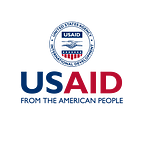How USAID Helps Countries on Their Development Journey
Check out photos from our archives of countries that moved from aid recipients to trading partners — to donors themselves
Since 1961, USAID has been at the forefront of international development and humanitarian leadership on behalf of the American people.
We work to promote long-term impact and sustainable growth in developing countries by helping them become more stable, resilient, democratic and self-reliant. We also provide life-saving humanitarian assistance in times of crisis, whether man-made or caused by natural disaster.
Our work stands alongside efforts in defense and diplomacy to promote U.S. and international security. It builds goodwill among other nations and supports global prosperity by advancing emerging economies that also generate new markets for American goods and services.
We help address and reverse the root causes of instability around the world, such as extreme poverty, hunger, conflict, violence, poor governance, and lack of opportunity, and provide alternatives that help communities grow into strong international partners.
Over the years, some countries where we have worked made significant economic progress. When their per-capita income grew enough, they moved beyond being aid recipients and became trading partners. Some have even become donors themselves.
“I believe the purpose of foreign assistance is to end the need for its existence. Every one of our development programs should look forward to the day when it can end. And every investment we make, every innovation we apply, must move a country closer to that day when it can be truly self-reliant.” — USAID Administrator Mark Green
Here are a few photos from our archives showing USAID’s work in countries that have since made the strategic transition from U.S. assistance:
South Korea — Strategic transition, 1980
Read about USAID’s work in South Korea and the country’s transition from aid recipient to donor: Celebrating USAID’s Role in South Korea’s ‘Graduation.’ Beginning in 1952, USAID supported South Korea in building agriculture and industrial sectors that fueled development.
Chile — Strategic transition, 1996
USAID has partnered with Chile on trilateral cooperation activities throughout the Americas. Chile worked with the United States to improve livestock health and food safety in El Salvador, and to strengthen Paraguay’s customs agency and export promotion agency.
Costa Rica — Strategic transition, 1995
As Costa Rica’s economic and social development increased, the U.S. pursued a different relationship. The nonprofit organization Costa Rica-United States Foundation for Cooperation (CRUSA) was established to build on the legacy of USAID’s work, symbolizing continued U.S. commitment to the country.
Bulgaria — Strategic transition, 2007
Read about USAID’s work in Bulgaria supporting small businesses and job growth, increasing the efficiency and transparency of courts, privatizing and regulating the banking sector, and other initiatives.
USAID looks forward to more success stories like these as we support our partner countries on their journeys to self-reliance. We are adopting a data-informed approach to tracking country progress.
By helping countries to manage and finance their own development, USAID is working to create the conditions whereby countries can achieve for themselves all those things that are important to America and the global community: good governance, rule of law, sound economic and social policies, inclusive growth, and healthy and educated populations.
Follow USAID on Twitter, Facebook and Instagram. More photos of USAID’s work can be found on USAID’s Storytelling Hub and Exposure page.
